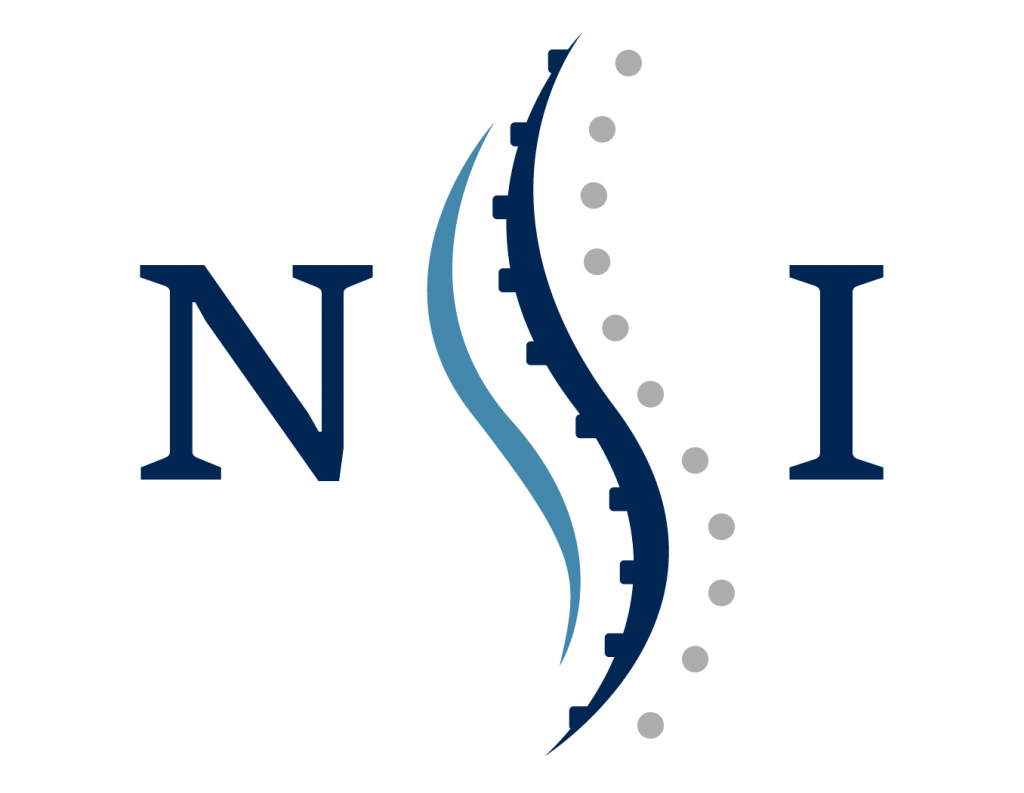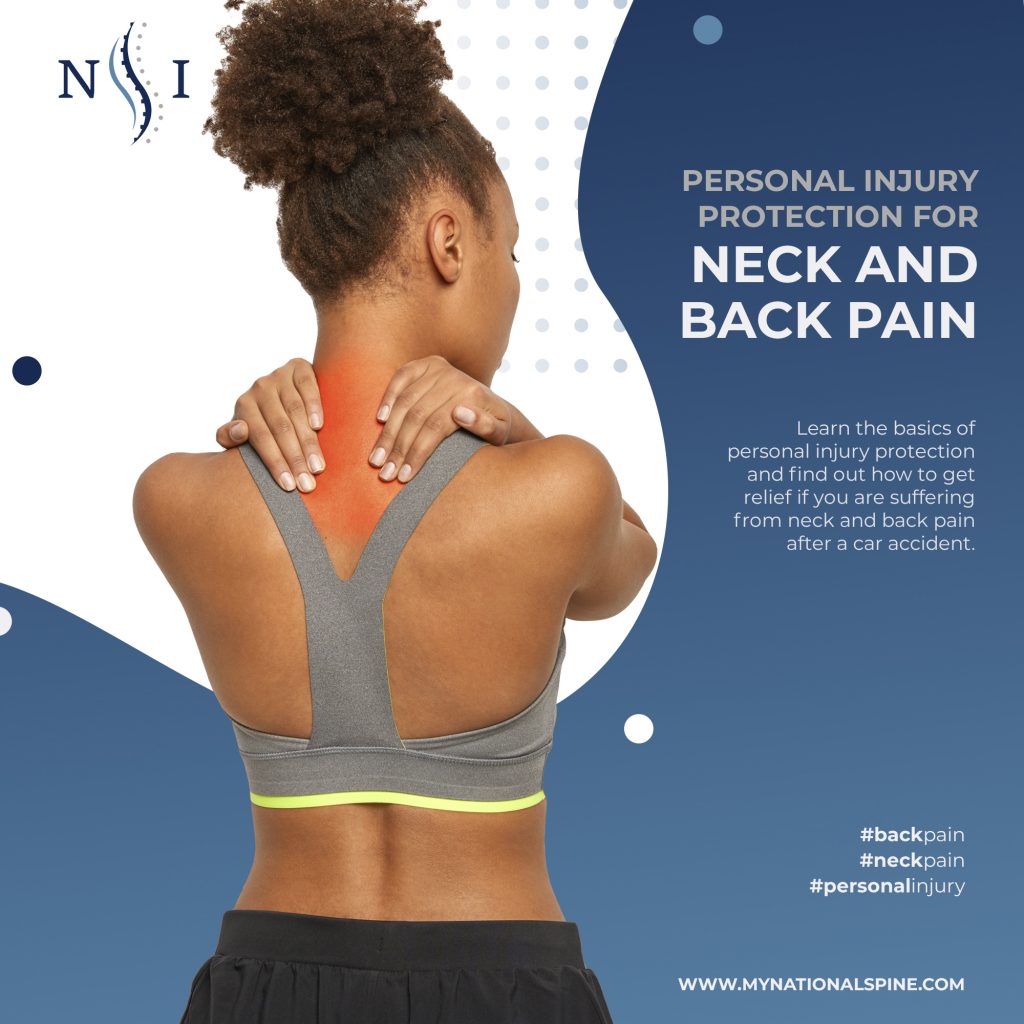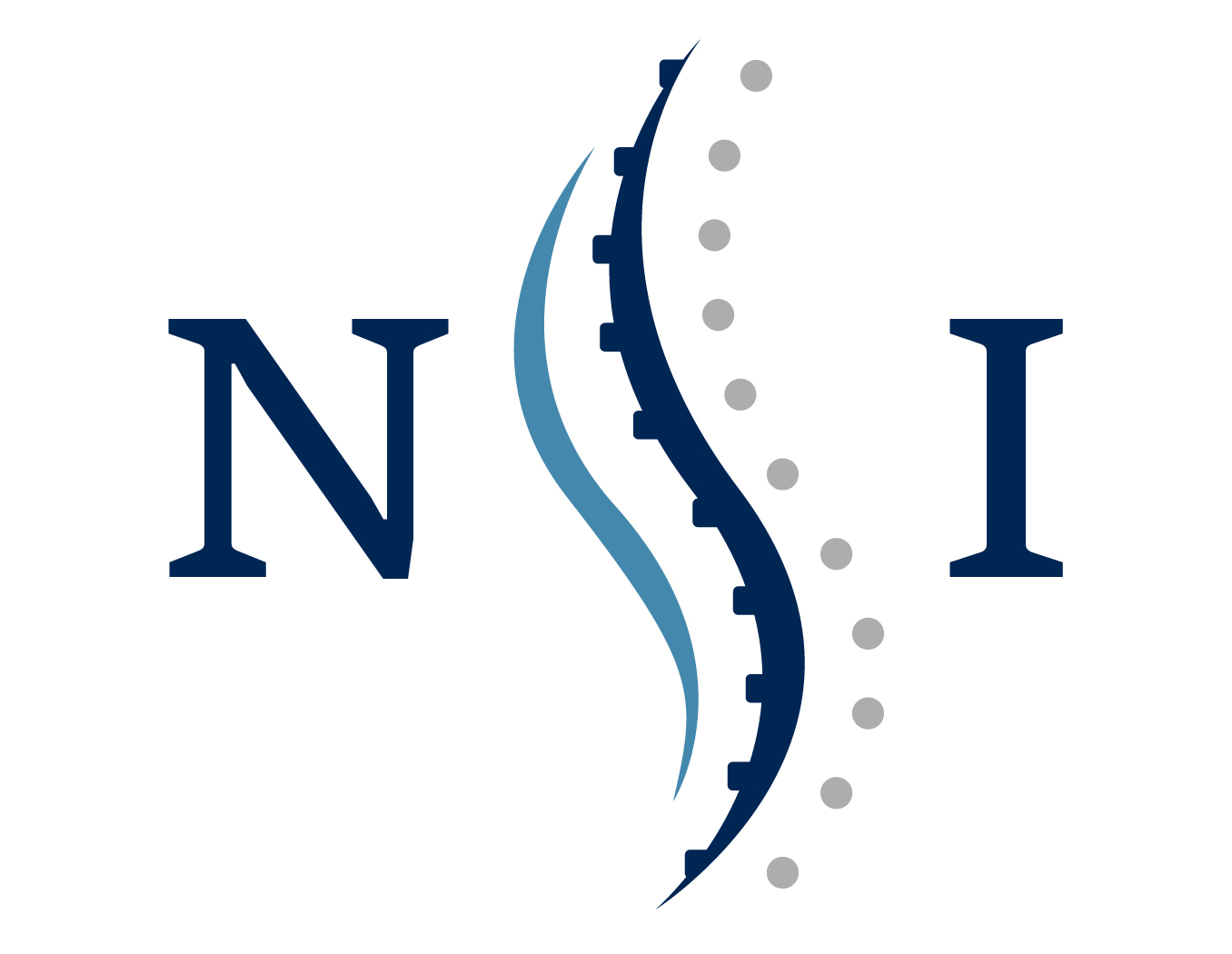Personal Injury Protection for Neck and Back Pain


Personal Injury Protection for Neck and Back Pain
Motor vehicle collisions are a leading cause of neck and back pain, affecting millions of people in the United States each year. Although the pain and related symptoms can have a negative impact on quality of life, there are effective treatments that can help you find the relief you need. There are also systems in place to ensure that people who are involved in an accident are covered and/or compensated for any medical expenses that arise, including personal injury protection.
By understanding the basics of personal injury protection and how it affects your treatment after a car accident, you can be better prepared to achieve long-term relief for any pain and symptoms that develop. At National Spine Institute, our highly knowledgeable staff has extensive experience helping patients dealing with neck or back after a car accident find the relief they deserve. We’re sharing the following guide to personal injury protection to help you understand how it can affect spine care.
We’re here to help, and welcome you to reach out if you have any questions or would like to learn more about your treatment options.
Personal injury protection basics
Also called no-fault insurance, personal injury protection is a part of an automobile insurance policy designed to cover health care costs that arise due to a motor vehicle collision. This can include the driver of the vehicle as well as any passengers. It is called no-fault insurance because if the policy is in a no-fault state, then the auto insurance company is required to cover medical expenses regardless of who caused the accident.
Personal injury protection insurance is designed to make medical care affordable and ensure anyone involved in a motor vehicle accident has access to necessary care. Additionally, it is designed to cover lost wages and other expenses related to the accident.
Is personal injury protection required by law?
Personal injury protection insurance is required by law in the states of Florida, Hawaii, Kansas, Kentucky, Massachusetts, Michigan, Minnesota, New Jersey, New York, North Dakota, Pennsylvania and Utah as well as the US territory of Puerto Rico. It is a “compulsory add-on” in other states, including Oregon and Texas. Additionally, it is an “optional add-on” in states including Washington, Wisconsin and Virginia, as well as Washington, DC.
Generally, personal injury protection policies will have a maximum limit of coverage, at which point health insurance will begin covering medical expenses related to the accident. It is important to understand how your health insurance potentially covers auto accidents and/or interacts with personal injury protection to have the most clear picture of your coverage for medical expenses.
How car accidents cause neck and back pain
In addition to fractures, contusions and traumatic brain injuries, spine injuries that cause neck and/or back pain are very common auto accident-related injuries. This is because while the spine does need to be strong enough to support the upper body and head, it also is flexible enough to enable movement. This makes our neck and lower back particularly vulnerable to large amounts of stress and trauma, such as those we experience during a car crash.
For example, the injury known as whiplash — caused by forceful back and forth movement to the neck — puts tremendous strain on the upper, or cervical spine. This can result in strained muscles, sprained tendons and ligaments, as well as trauma to the spinal discs. The forces of an auto accident can also cause trauma to the lower spine, resulting in injury to muscles, connective tissue and spinal discs in this area.
What to do if you are in a car accident
Every accident is different, so there is not one set of instructions that can possibly apply to everyone who finds themself in an accident. However, there are some general principles to follow that can help ensure your safety and health:
- Never leave the scene of an accident
- Prioritize the health and safety of yourself and anyone else involved
- Make sure anyone gets necessary emergency medical treatment and err on the side of caution
- Contact the police to ensure that an accident report gets filed
- Record as much detailed information as possible about the accident, including insurance information and contact information
- Contact your insurance provider
- Do not disclose confidential information, including your social security information and specific insurance coverage limits
- Get yourself a thorough medical examination as soon after the accident as you can, if you don’t need immediate care
Why you need to be proactive about your medical care
The full effects of a car-related injury can often take days or even weeks to develop. This is particularly true with neck and back pain, which has a delayed onset in many cases. It’s important to get yourself checked out by a qualified medical professional, such as your primary care doctor, not only to stay on top of symptoms and treatment, but also to establish a medical record. From a personal injury protection standpoint, it’s easier to positively link neck or back pain to a car accident if it is diagnosed within days of the accident than if it isn’t identified until weeks or even months later.
Come to your doctor with as much information about the accident as you can provide, including how the accident affected your body and any and all symptoms you are experiencing. Your doctor should perform a thorough examination, including movement tests and palpitations, and order any necessary diagnostic testing to evaluate your condition.
Even if you do develop neck or back pain down the road, your physician may have a better idea of what to look for and diagnose the condition if you have previously reported and been examined for a car accident.
Thoroughly explore conservative therapies
In most cases, neck or back pain related to a car accident can be successfully treated with conservative, nonsurgical therapies. These include:
- Rest
- Over-the-counter medication
- Hot and/or cold compression therapy
- Gentle stretches and low impact therapeutic exercise
- Physical therapy
- Corticosteroid injections
- Therapeutic massage
Physical therapy is an extremely important part of the recovery process for many injuries. By strengthening supporting muscles and improving range of motion for damaged connective tissue, patients can regain function in the wake of an injury. Other interventions, such as steroid injections, can help reduce pain and inflammation around an injured area to enable the completion of a physical therapy program.
Understanding your surgical options and the benefits of minimally invasive procedures
Patients should begin to become a serious consideration for neck or back pain related to a spine condition that does not improve after exhausting conservative therapies. Many people are reluctant to undergo surgery due to the risks and difficulties involved, particularly those associated with traditional open neck or back surgeries.
As an alternative, many spine procedures can now be performed using advanced, minimally invasive techniques that allow for an outpatient procedure. By reducing incision size and the disruption to surrounding soft tissue, minimally invasive spine surgery can help patients experience a shorter recovery time with less risk of complication. These procedures help many patients who have experienced personal injury after a car accident find the relief needed to regain an active lifestyle.
Personal injury protection and spine care
The best thing any patient can do to ensure that personal injury protection adequately covers their spine care is to be proactive about gathering information about the accident, notifying the authorities, notifying the insurance provider and seeking a prompt medical evaluation and treatment. Establishing clear records of the accident and ensuing medical care helps the personal injury protection process for all parties.
In many situations, patients will choose to work with a personal injury attorney who specializes in working effectively with insurance and medical providers to navigate the complexities of the personal injury protection process.
National Spine Institute understands personal injury protection for neck and back pain
At National Spine Institute, our caring and experienced team specializes in evaluating and diagnosing spinal injuries related to personal injury protection. Our highly skilled surgeons are trained in minimally invasive spine surgeries that can relieve pain and improve mobility.
Conditions we treat at our outpatient centers include whiplash, bulging discs, herniated discs, pinched nerves or spinal fractures caused by a wide range of injuries, including motor vehicle collisions. We have extensive experience and operational know-how in working with attorneys and insurance companies in the personal injury protection process to get you the care you need.
We’re committed to the highest level of patient care to get you back to the people and activities you love. If you’re living in pain after an accident, please contact us today to learn about scheduling an appointment in one of our facilities in Tampa, Orlando, Ocala or Boynton Beach, Florida.
